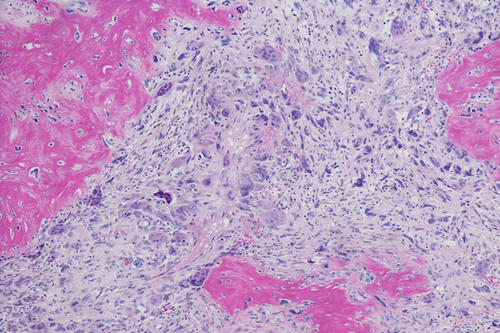
Osteosarcoma is the most common bone cancer in humans and canines, but is much more common in dogs. Researchers have looked at using knowledge gained from studying dogs affected by osteosarcoma to improve human outcomes.
However, according to a team of University of Minnesota researchers, understanding the differences in osteosarcoma tumors in dogs and humans is essential to deciphering effective treatment for both species. The study’s findings were recently published in the journal Veterinary Sciences.
The study found:
- even though the clinical progression of osteosarcoma is similar in humans and dogs, the disease-causing genetic mutations are mostly different in dogs than they are in humans;
- because dogs and humans live longer now — due to improved health care, nutrition, etc. — they are at greater risk for cancer;
- canine osteosarcoma can be a model for human osteosarcoma when asking research questions that fall within the areas where the diseases are similar, such as “Can we develop safe and effective therapies that disrupt the organization and interactions of different cell types that make up the tumor?”;
- even though bone cancer is the most stark example of a cancer that forms when dogs and humans outlive their evolutionarily natural timelines, the same principle likely applies to every other cancer that would occur in both dogs and humans.
“Where our review breaks ground is in acknowledging that with the many similarities between bone cancer of dogs and humans, there are equally many differences,” said study lead Jaime Modiano, a professor in the College of Veterinary Medicine and Masonic Cancer Center member. “One difference is in the predominant age of onset with bone cancer occurring more commonly in older dogs and in younger humans.
“I believe that this can help focus our energy to make sure that we limit the assumptions we make about the similarities between bone cancer in dogs and in children. It highlights the fact that we can understand the differences between the disease in both species. Therefore we can more precisely define where work in one species benefits another, and where work in one species is irrelevant to the other.”
Modiano hopes this research can help identify the critical steps in the formation of bone cancer and help develop new strategies for prevention and treatment.
- Categories:
- Health




